Drop a pin on a map of New Jersey and you’ll find more than a few peculiar names adopted by towns, boroughs, cities and neighborhoods—some you may have heard of before, others you may have to Google to believe. So how did these Garden State spots come to adopt their names? We trekked through the World Wide Web, old history books and town records to find out.
1. Ho-Ho-Kus
Ho-Ho-Kus, pronounced ho-HO-kus, is a borough located in Bergen County first settled in 1698. The meaning behind the town name is unclear. According to the borough website, the most accepted origin is that Ho-Ho-Kus was a contraction of Mehokhokus or Mah-Ho-Ho-Kus, a native Delaware Indian term meaning “the Red Cedar,” as many older native terms beginning in “me” or “mah” lost their first syllables over time. The word is also a native term for running water, is similar to the word “hoccus” meaning fox and sounds similar to “Chihohokies,” the name of a native tribe whose chief lived in the area.
There are many town names derived from New Jersey’s native culture. To list a few:
Cinnaminson: Derived from the Lenni-Lenape word “senamensing” meaning “sweet water.”
Hackensack: Derived from Lenni-Lenape word “Achsinnigeu-haki” meaning “stony ground.”
Metuchen: Named for the Raritan Indian Chief, Matouchin, who lived in the area in the late 17th century.
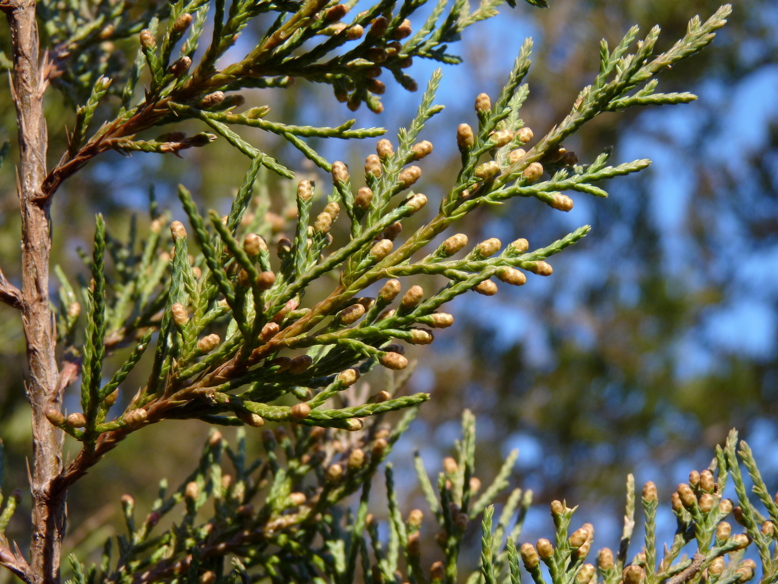
A New Jersey Eastern Red Cedar tree. Photo courtesy of Flickr Creative Commons: Dendroica Cerulea
2. Buttzville
Welcome to Buttzville, better known as that weird little town you drive through on the way up to the Pocono Mountains. Yes, Buttzville—population 146—got its name when the area was founded by Michael Robert Buttz in 1839, which author Patricia Martinelli writes about in her book New Jersey Ghost Towns: Uncovering the Hidden Past. The small, unincorporated community is located within White Township in Warren County and is approximately 181 acres in size—one-eighth the size of Central Park.
Despite its small size, Buttzville is home to a well-known tourist attraction—Hot Dog Johnny’s. The iconic landmark stop is known for its house-legged birch beer, hot dogs and its unique atmosphere.
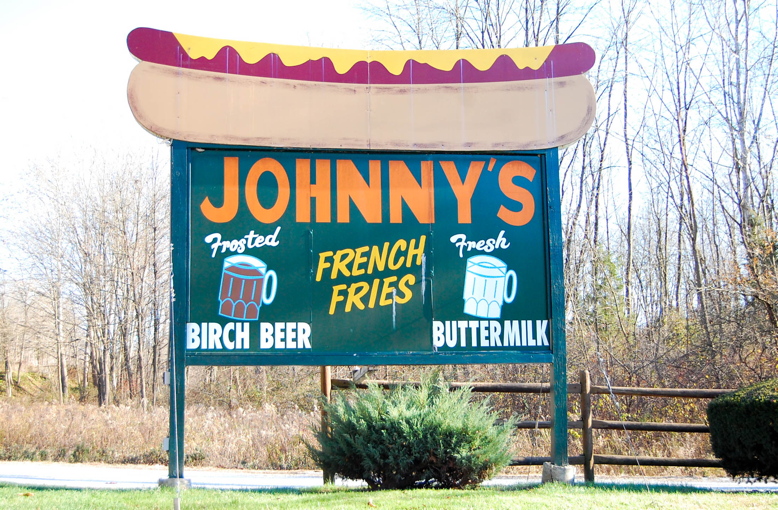
Hot Dog Johnny’s is an iconic tourist spot in Buttzville. Photo courtesy of Flickr Creative Commons: Todd Lappin.
3. Bargaintown
According to Sketches of Egg Harbor Township composed by the Egg Harbor Township Tercentenary Publications Committee, there are a few origin stories associated with the community located in Egg Harbor Township.
The most popular tale is that James Somers, a large landowner living in the area in the mid-1700s, made a deal—a bargain if you will—with some of his slaves. If they could build a road across Bargaintown Lake he would let them go free. Apparently, the lake—which connected to Patcong Creek—inconveniently separated Somers and his associates from conducting business on the west side of town.
The story goes, that after Somers’ slaves worked a full day, they continued on the project in their spare time, operating by lamplight after dark to move rocks and stone to complete the pathway (on Central Avenue)—which they eventually did. Somers allegedly stayed true to his word and let his slaves go free, offering them a piece of land to till in exchange for their work, thus the name Bargaintown was adopted.
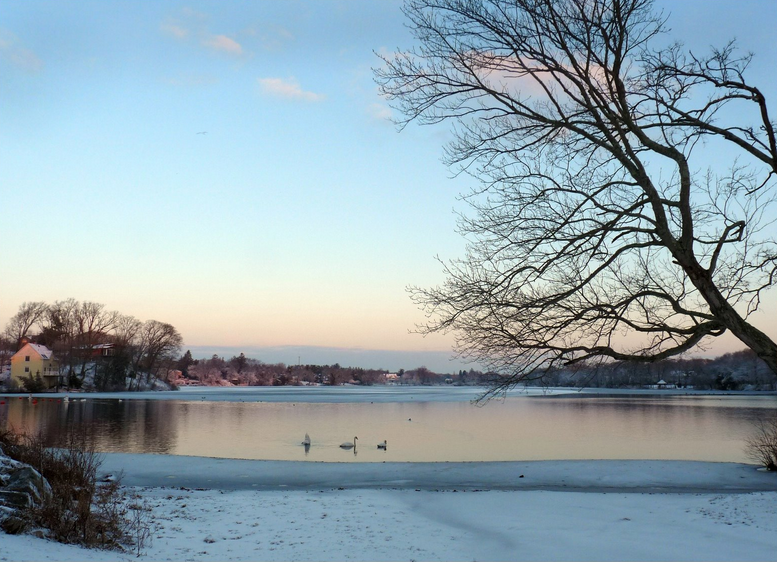
Swans enjoy peace and tranquility on Bargaintown Lake. Photo courtesy of Kathleen Fitzgerald.
4. Zarephath
Zarephath is an unincorporated community located in Franklin Township just 15 miles north of Princeton. The community is home to Pillar of Fire International—an evangelical Christian organization founded in the early 1900s by Alma White, an outspoken feminist and racist who supported the Ku Klux Klan.
According to Franklin Township, Somerset County, NJ: A History by William B. Brahms, the name of the town given by White is derived from a place by the same name mentioned in the Bible, where a widow provides food and water for the prophet Elijah. The still active organization has since distanced itself from its founders’ ideals. Today, Pillar of Fire runs Pillar College, formerly located in Zarephath with the name Somerset Christian College. Pillar College now has locations in Newark and Somerset and the church works to conduct missions all across the globe.
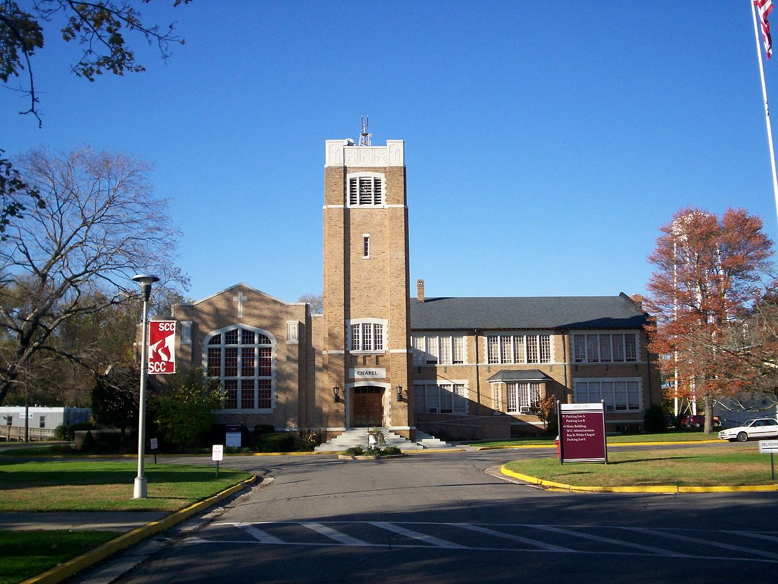
Pillar of Fire International is headquartered in Zaraphath. Photo courtesy of Wikimedia Commons: Richard Arthur Norton.
5. Loveladies
Located between Harvey Cedars and Barnegat Light on Long Beach Island, the unincorporated community of Loveladies was formed in the late 1870s. According to the Loveladies community website, when the U.S. Life-Saving Service, now known as the United States Coast Guard, first established life-saving stations in LBI, locals were unsure what to name Local Station No. 114. After a few discussions, they finally decided to name the station after a small island on the bay named Lovelady Island, owned by local hunter and sportsman, Thomas Lovelady. The area held several names over the years, including the Club House and Long Beach Park, but in 1952, the community was officially named Loveladies, keeping ties with its founding name.
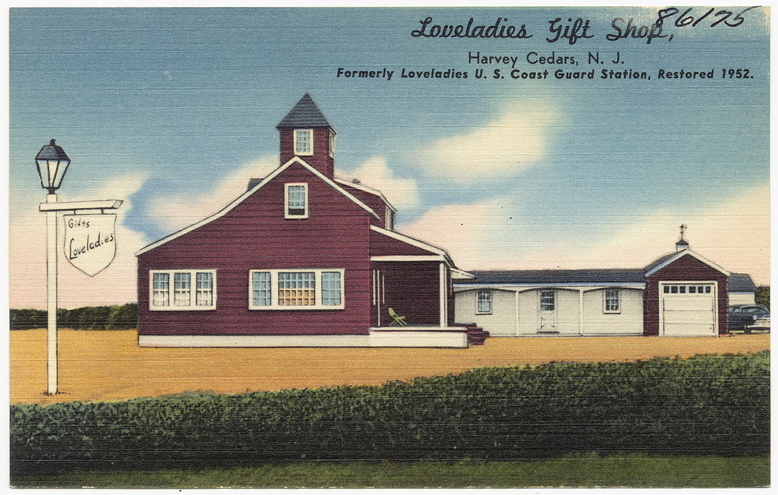
The Loveladies Gift Shop, formerly Loveladies U.S. Coast Guard Station No. 114, circa 1952. Courtesy of Flickr Creative Commons: Boston Public Library.
6. Ogdensburg
I am Ogden, son of Oden… sorry, wrong story. According to Images of America: Franklin, Hamburg, Ogdensburg, and Hardyston by William R. Truran, Ogdensburg—also known as “the Burg”—is named after the borough’s first known permanent settler, Robert Ogden. Originally from Elizabethtown (Elizabeth), Odgen’s large family included several outstanding patriots who fought with George Washington against the British. It is even said that in 1779, during Washington’s march from Newburg to Morristown, segments of Washington’s army camped on the Ogden farm.
Several members of the Odgen family ran a distillery that produced peach and apple brandy while others worked in the local area mining iron ore—the area is famous for its zinc ore—and Ogden himself began the first Presbyterian church in the area. Today, the 2.8-square mile town is home to the Sterling Hill Mining Museum, a former iron and zinc mine which offers mining tours and educates visitors on the area’s rich mining history.
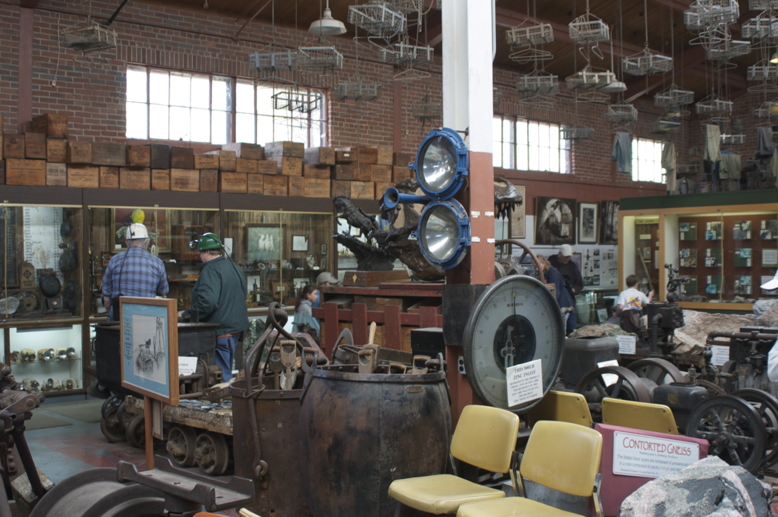
Inside the Sterling Hill Mine Museum in Ogdensburg—once famous for the iron and zinc ore found there. Photo courtesy of WikiCommons.
7. Lawnside
For a tiny borough in Camden County, Lawnside has a sizable history. Their municipal website states Lawnside was “the first independent self-governing African-American community north of the Mason-Dixon Line.” According to the Encyclopedia of New Jersey, the area was one of the many stops along the Underground Railroad. It was originally developed in the 1840s by Philadelphia abolitionist Ralph Smith, who dubbed the community “Free Haven” to signify its role as a refuge from slavery.
Smith sold parcels of his land to freed African Americans at low prices. In 1907, Free Haven merged with neighboring community Snow Hill, also a refuge for ex-slaves. The newfound community was renamed Lawnside after the railroad station by the same name, built by the Pennsylvania and Reading Company railroads. The borough was officially incorporated in 1926.
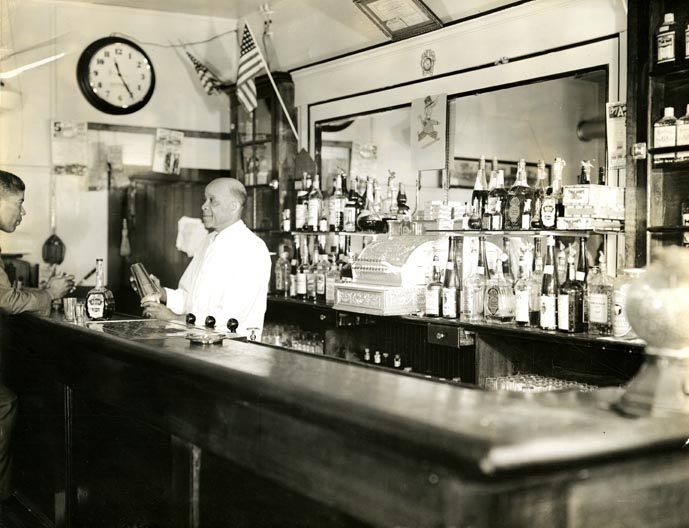
A tavern in Lawnside, circa 1940. Courtesy of WikiCommons.
8. Tavistock
Calling all golfers—Tavistock is the place for you! The story goes that golfers who were members of the Haddon Country Club in Haddonfield, were upset that the borough’s blue laws kept them from being able to enjoy a game of golf on Sundays—all sports were banned on the holy day in the Quaker town.
According to multiple news articles, in response to the ban, the group of golfers joined together and raised funds for a new course to be built on the land known as the Tavistock estate. Home to the Tavistock Dairy Farms, the grounds were named after landowner William H. Gill’s hometown in England. The estate, which had been owned by the Gill family for over 100 years, was purchased in 1918 by one Frank Middleton, a golfer and member at the Haddon Country Club. Middleton offered up part of his property to house the new league dubbed the Tavistock Country Club, formed in 1920.
In early 1921, the area officially seceded from Haddonfield and Tavistock borough was officially incorporated—Middleton was named mayor. The area’s population stands at a strong five today and is still home to the Tavistock County Club.

Tavistock borough was formed by a group of golfers in the 1920s. Courtesy of Flickr Creative Commons: Tord Sollie.
9. Buckshutem
According to some accounts, the name of this small community is pretty self-explanatory. Legend has it that when a local Native American spotted a male deer walking in the forest, he said, “Buck. Shoot’em.” Journalist Debra A. Barsotti, who writes about the small community and its history on the Maurice River Recollections Project website, writes that another popular tale is the name was derived based on the rapid flow of water as it empties from Buckshutem Creek. It’s said that when the creek empties into the Maurice River, the cross current causes a boat to “buck and shoot” through the section.
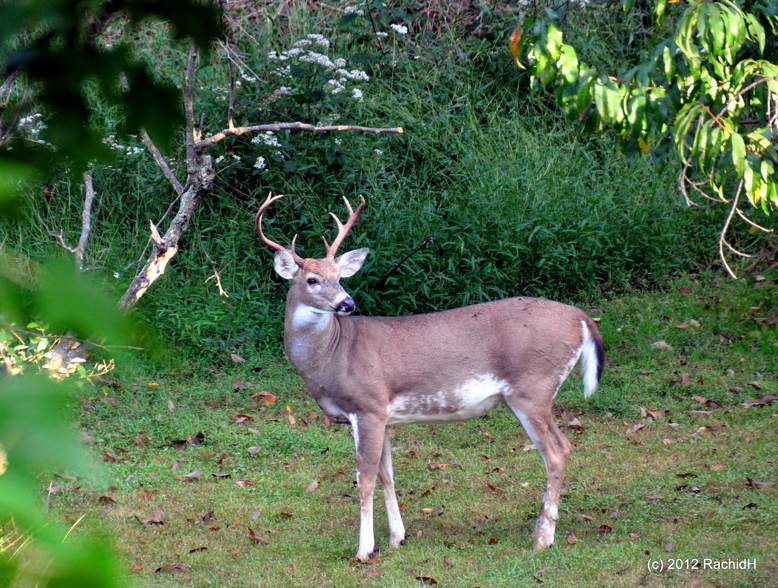
A buck walks in New Jersey. Photo courtesy of Flickr Creative Commons.
10. Ong’s Hat
If you’re from Ong’s Hat—you might be a ghost. This unincorporated, ghost town in Pemberton Township isn’t much of a community, but the area has an interesting history that predates the Revolutionary War (the area appears on a 1778 Hessian map of southern New Jersey).
A popular legend documented in Weird NJ Volume II is that a young, flashy Casanova with the last name Ong—a popular old-time Pine Barrens name—was a fixture at local dances, flirting with various love-interests. One night, a jealous vixen caught Ong flirting with another woman and ended up stomping on his beloved silk hat. Furious, Ong ran outside and threw the hat in the air, where it landed on the branch of a pine tree. The hat allegedly stayed there for years, becoming a well-known landmark for passersby.
However, in a 1968 letter published in the New York Times, an Ong family descendent discounted the legends and stated instead that the Ong family had built a hut midway through the route from Little Egg Harbor to Burlington in the early 17th century, so they could rest overnight on the journey—and Ong’s Hut simply became Ong’s Hat over time.
Either way, the town has held its lore over the years. Ong’s Hat has been popularized in recent years by author Joseph Matheny. Well-known for his transmedia storytelling methods, Matheny published the book Ong’s Hat: The Beginning as an experiment in storytelling, considered to be one of the first internet-based conspiracy theories that helped to shape the foundation for Alternate Realty Games. Matheny weaves a complex tale that leads his protagonists to discover a gateway to another dimension, centered in Ong’s Hat, New Jersey. Who knew?

It’s a spooky trek along Ong’s Hat Road, an alleged gateway to another dimension. Photo courtesy of Panoramio: Don Otis.
There’s lots of other weird town names in the state—which ones should make Part II? Let us know your weird hometown in the comments!

I thought for sure Succasunna was going to be on here.
What, no Cheesequake?
Ship Bottom NJ didn’t make the list?!
No Succasunna?!
What about Hog Wallow?
I’ve heard of Hog Holler, now Hazen.
how about Alloway?
There’s also Recklesstown, NJ now known as Chesterfield NJ.